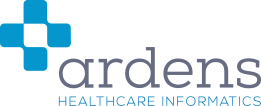TABLE OF CONTENTS
- Introduction
- Step 1. Identify RA Needs
- Step 2. Record RA Essential Codes
- Step 3. Show RA Flag
- Step 4. Share RA Needs
- Step 5. Meet RA Needs
- Step 6. Review RA Needs
- Video
Introduction
In line with the recent NHSE Reasonable Adjustment Digital Flag (RADF) updates, NHSE has recommended the following steps. Below is a summary along with the Ardens resources available to support these steps.
Step 1. Identify RA Needs
A report for this has been created on Ardens called to identify any patients who may be at risk of RA.
- RA Screening - ?For RA screening as has LD, autism or dementia
N.B. A new SNOMED code has been requested for ‘Does not require RA’. Once available, this will be added to this report to allow practices to exclude patients if they have been reviewed but do not have any RA requirements, in order to remove them from this report.
Step 2. Record RA Essential Codes
The following are essential codes for the RADF which can all be found at the top of the RA template on Ardens. To access the template, just search for it in the bottom left of SystmOne, or add it to your F12 Favourites list.

- Impairment with substantial and long-term adverse effect on normal day to day activity (Equality Act (2010) 1326341000000105
- Requires reasonable adjustment for health and care access (Equality Act 2010) 1108111000000107
- Consent given to upload data to Reasonable Adjustment Digital Flag (finding) 1853771000000105 or declined consent to upload data to Reasonable Adjustment Digital Flag (finding) 1853781000000107.
Once these have been added, the specific details of the Reasonable Adjustment can be added by clicking the 'RA Specific Details' link, or clicking on the 'RA Specific Details' tab at the top of the template.

Click on the relevant drop down on this page to add the code for the specific reasonable adjustment required. As long as the 3 essential codes on the 'Home' page are also added, then any code added on this page will also be uploaded to the RA Flag.
The following reports can be used to help identify these patients and can be found in Clinical Reporting > Ardens > Registration > Reasonable Adjustment:
- RADF Essential Codes - 0. All (RA Equality Act legal threshold + RA required + RADF consent)
- RADF Essential Codes - 1. RA Equality Act legal threshold met
- RADF Essential Codes - 2. RA required
- RADF Essential Codes - 2. RA required - Specific adjustment needs
- RADF Essential Codes - 3. RA Digital Flag consent
There are also some accompanying Ardens Data Quality reports to ensure all the correct codes have been recorded:
- RADF DQ - 1. ?Record legal threshold met as RA required or RADF consent
- RADF DQ - 2. ?Record RA required as legal threshold met or RADF consent
- RADF DQ - 3. ?Record RADF consent as RA legal threshold met or RA required
- RADF DQ - 4. ?Record essential codes as legacy RA code used
Step 3. Show RA Flag

Step 4. Share RA Needs
Referral letters should highlight any reasonable adjustments.
N.B. Ardens are still in communication with NHSE about how best to do this and will provide an update shortly.
Step 5. Meet RA Needs
Depending upon the adjustment needed, healthcare providers must act accordingly to meet these needs. The Ardens recall and invitation reports will look at identifying these patients with RA needs so they can be managed by the practice accordingly.
Step 6. Review RA Needs
It is recommended that RA needs are reviewed every 12 months. A report for this can be found on Ardens called:
- RA Review - ?For RA review as has RA + no review in last 1 year


